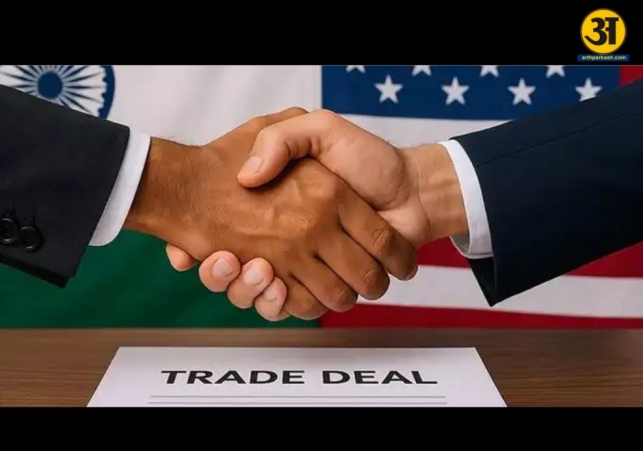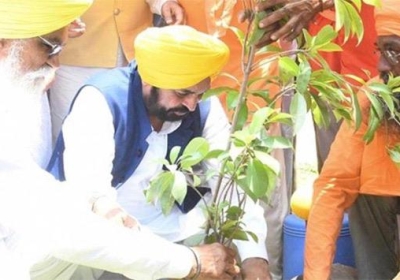
India and US struggle to make progress in ongoing trade discussions
India-US Trade Negotiations Stall Amid Growing Differences on Key Issues
- By Gurmehar --
- Friday, 13 Jun, 2025
The latest round of trade talks between India and the United States ended in New Delhi on Tuesday, but key disagreements—especially on tariffs—remain unresolved. With a crucial July 9 deadline approaching, both countries are under pressure to reach a deal before new US tariffs on Indian goods come into effect.
The discussions, which lasted for six days, were led by Brendan Lynch, assistant US trade representative, and Rajesh Agrawal, India’s special secretary. This was their fourth in-person meeting, and while both sides said progress was made, no final agreement was reached.
The main challenge came from the US demanding duty-free access for many of its goods, while India is open to reducing tariffs, but only if the US also removes its additional duties. Sources say Washington's protectionist steps, including 50% tariffs on steel and aluminium and a 10% baseline tariff on all imports, were major roadblocks.
An official said:
“The negotiations held with the US side were productive and helped in making progress... but there are still sensitive issues to resolve.”
India is especially concerned about three points:
-
The US plan to add another 16% reciprocal tariff on Indian goods from July 8.
-
The need to withdraw current safeguard duties on Indian steel, aluminium, auto parts, and more.
-
Removal of the 10% general import tariff imposed from April 5 on goods from 57 countries, including India.
These trade restrictions have created real-world problems. For example, Indian handicrafts that include even a small metal part are being taxed twice—once as a full product and again for the metal—leading to high compliance burdens.
India is willing to bring its MFN (Most Favoured Nation) tariffs on US goods down to near-zero, but only if the US also lowers its tariffs or removes all additional trade barriers. Under World Trade Organization rules, countries can only change MFN rates through mutual agreements such as free trade deals.
The Trump administration had previously doubled tariffs on Indian steel and aluminium to 50%, but made exceptions for countries like the UK. Indian officials argue that India should also be exempt, especially since it began trade discussions with the US long before Trump’s “Liberation Day” tariffs were announced on April 2.
India pushes back against US tariff pressure
India has taken several goodwill steps in recent months, hoping to make progress on a Bilateral Trade Agreement (BTA). These include:
-
Lowering duties on bourbon whiskey and motorcycles
-
Removing the 6% “Google Tax” on digital services
-
Clearing the entry of Elon Musk’s Starlink satellite internet
These steps were meant to show India's willingness to support American business interests, but New Delhi now expects the US to reciprocate.
Indian negotiators also cited that US tariff measures are temporary. Even though a federal appeals court upheld the tariffs for now, the US Trade Act of 1974 only allows the President to impose temporary tariffs for 150 days. Extending these tariffs would need approval from Congress, adding more uncertainty to the situation.
India’s message is clear:
“We’re ready to cut tariffs, but we want a deal that’s fair and balanced.”
Meanwhile, the US side remains focused on removing barriers for American exports, which include tech, agriculture, and energy products. A US official earlier said that achieving “early wins” in areas like digital trade, agriculture access, and energy cooperation could set the foundation for a more comprehensive trade agreement in the future.
So far, both sides have not confirmed another round of in-person talks. However, sources suggest that discussions could continue virtually or through back-channel diplomatic channels in the coming weeks.
If no deal is reached by July 9, the US is likely to implement its additional tariffs on Indian products, which could lead to a trade dispute between the two nations. This would not only raise prices on Indian goods in the US but could also slow down bilateral trade growth, which both countries have tried hard to boost in recent years.
ALSO READ: Why are Tesla stocks rising amid massive plunge in Europe sales? Know the secret behind
Complex trade landscape
India and the US have always had a complex trade relationship, marked by frequent disputes over tariffs, subsidies, and market access. Yet, both sides understand the strategic importance of each other in global politics and economics.
Bilateral trade between the two countries reached over $120 billion in 2024, and leaders from both nations have expressed the desire to expand it further. A deal before the July deadline could prevent friction and unlock further cooperation in sectors such as defence, clean energy, pharmaceuticals, and tech innovation.
Indian industry bodies have also urged both governments to act quickly. Exporters fear losing market access, while importers worry about rising costs due to tariffs. Industries that depend on components shipped from the US—such as electronics and auto manufacturers—may also face supply chain disruptions if tariffs go up.
According to a senior Indian official:
“We cannot afford a trade war at this stage. Both sides must compromise to secure long-term gains.”
For now, it appears that while progress has been made, the path to a full agreement remains uncertain. The coming weeks will be crucial in determining whether India and the US can bridge their differences and avoid another round of damaging tariffs.





